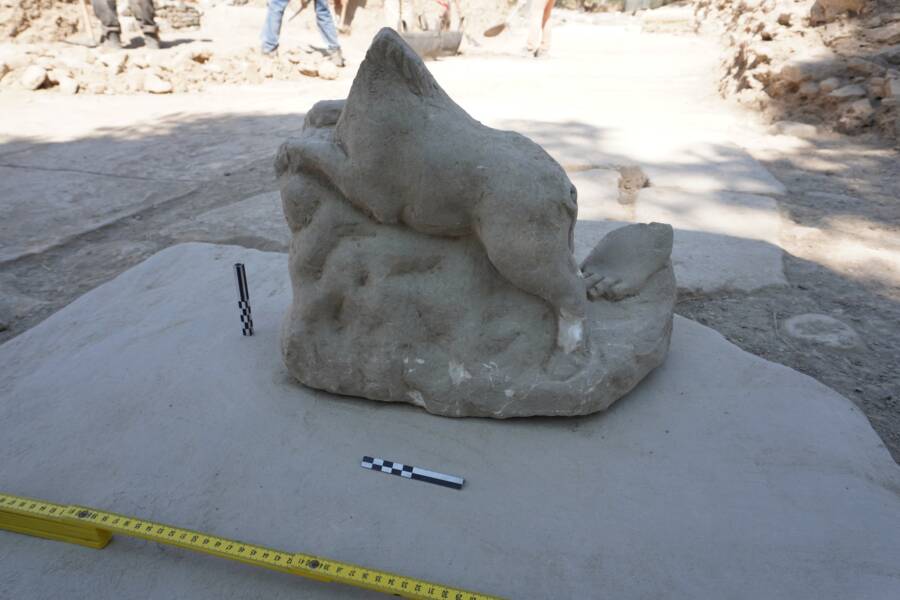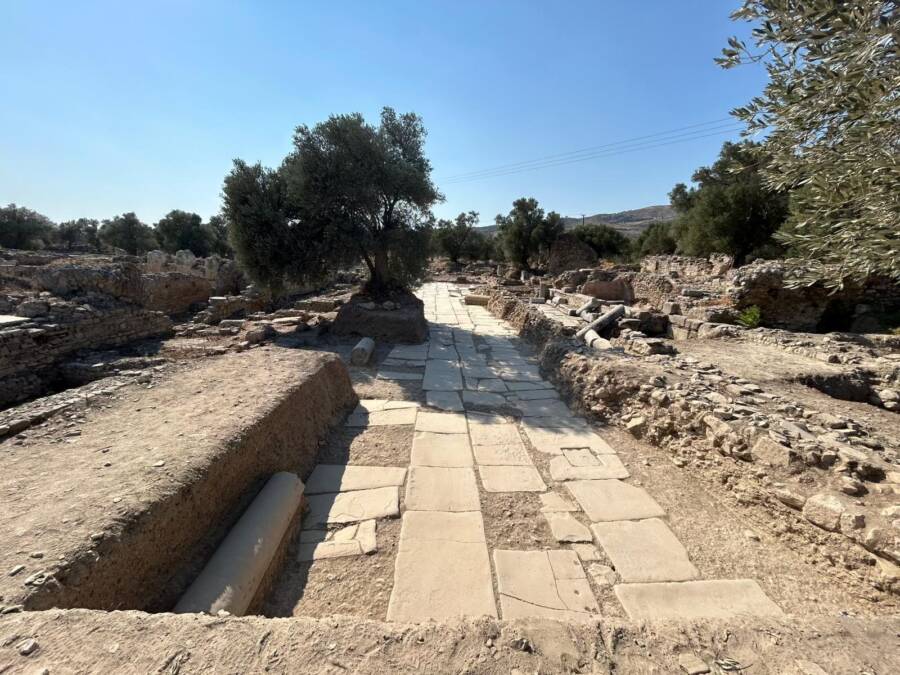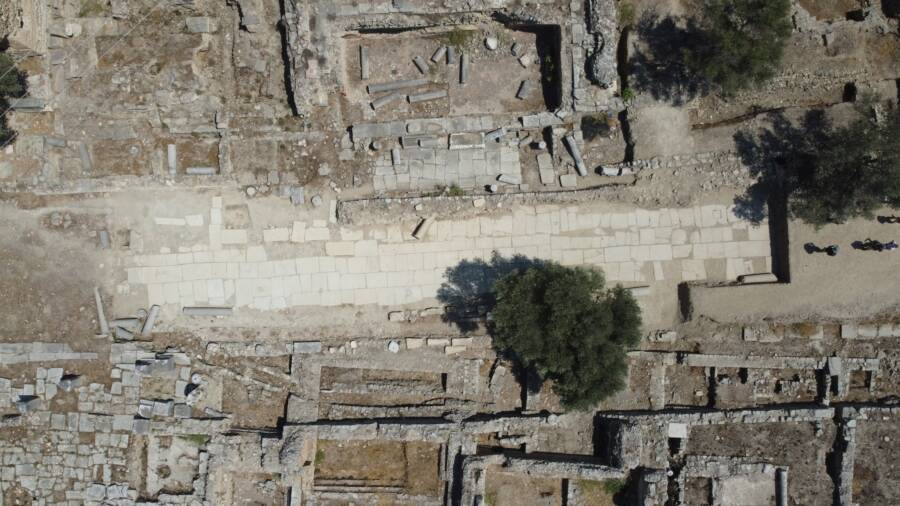Though experts know that this statue once stood near the central thoroughfare in the ancient city of Gortyna, they aren't sure what meaning it may have had or purpose it may have served.

Scuola Archeologica Italiana di Atene/FacebookThe statue was found along the main road in Gortyna, alongside a wealth of other artifacts.
Archaeologists excavating the ancient city of Gortyna on the Greek island of Crete recently uncovered a statue depicting a suid, a member of the pig family.
The discovery was made during a dig put together by the University of Rome “La Sapienza” and the Ephorate of Antiquities of Heraklion. The interdisciplinary team of archaeologists and topographers carried out the project between July 14 and August 9, 2025.
Researchers used state-of-the-art methodologies to examine the engineering techniques behind the ancient city’s well-preserved roadways and study the various artifacts that they unearthed. This analysis furthermore allowed experts to learn more about why these roads were eventually abandoned.
The ancient pig statue was found right along the city’s main thoroughfare, North Road. Nevertheless, archaeologists don’t know exactly how this striking piece once fit into the heart of ancient Gortyna.
What The Pig Statue Might Reveal About Life In Ancient Gortyna

Scuola Archeologica Italiana di Atene/FacebookThe excavation mainly took place along the city’s main street, dubbed North Road.
The dig as a whole focused on Gortyna’s North Road, according to a Facebook post from the Scuola Archeologica Italiana di Atene, and the pig statue is being touted as the project’s most noteworthy find.
The statue may offer insights into religious and cultural life in Gortyna, though experts remain unsure of its exact meaning and purpose. What researchers do know is that this piece is rare in that it depicts an animal and not a human. This also makes the statue something of a hybrid between Greek and other neighboring Mediterranean cultures of this period.
Researchers believe that by further examining the statue, more can be learned about both the symbolic roles and the more practical functions that artworks like these may have had in Gortyna, one of Crete’s most powerful city-states for centuries.
In addition to revealing more about how Gortyna’s society functioned, archaeologists hope that their recent work in the city will pave the way for onsite educational experiences at the ruins themselves.
Alongside their excavation work, the team also carried out a topographical survey. This survey aimed to create a high-resolution map of Gortyna in order to aid in future research and preservation efforts — which is especially important for a city that once played such an important part in the history of the ancient Mediterranean.
The Important Role Gortyna Played For The Ancient Greeks And Romans

Scuola Archeologica Italiana di Atene/FacebookAn aerial view of the ancient city of Gortyna.
The area that eventually became the ancient city of Gortyna is believed to have been inhabited as far back as 7000 B.C.E. During Classical antiquity, from the Minoan era to the Greek to the Roman, Gortyna was an extremely powerful Cretan city, rivaling its well-known neighbor Knossos.
Though divided by infighting during the Hellenistic era, namely the third century B.C.E., Gortyna prospered economically and expanded its dominance into neighboring areas while forging key alliances with the Egyptians and the Romans.
Because of those good relations with Rome, Gortyna was spared the destruction that befell other Cretan cities when Rome invaded and became the prevailing force in the Mediterranean in the middle of the first century B.C.E. Gortyna then served as the capital of Roman Crete, and it remained the seat of power even after the fall of Rome in the fifth century C.E.
Among the many archaeological treasures since unearthed at the ruins of Gortyna, researchers have found pieces of the Praetorium, the seat of the Roman Governor of Crete that was built in the first century C.E. Archaeologists have also found everything from a temple dedicated to Apollo to a Roman theater with room for an orchestra.
Now, the recent excavation work at Gortyna, including the discovery of the rare pig statue, has provided more insight into its religious and cultural life some two millennia ago.
After reading about the pig statue found in Gortyna, discover the story of the 4,000-year-old labyrinth uncovered on Crete. Then, learn about 11 astonishing mystical creatures from around the world.





